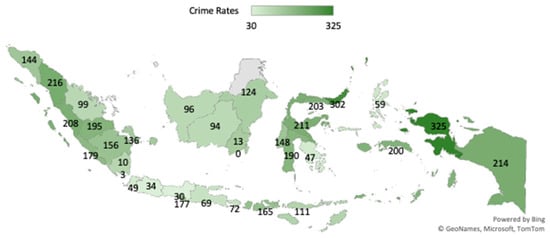..
Last edited:
3/4 of the teens are adults aged 18-19
They killed that over over some fukkin food? I hope them lil faggits get repeatedly ass raped in jail..Catch a body for ribs and chicken, brehs.
And Brehs wonder why black women talk about not being protected in the community. You have men coddling this behavior instead of showing leadership.Dude, the kid pushed his f*cking mother down the f*cking stars.
They were targeting women in black neighborhoods.
He bragged about killing the lady.
And all you bring to the conversation is that he was mad that he couldn't have a barbecue?

Yall see why nikkas f*cked up?
crime largely exists because of lack of resources.
 absolute clown shyt
absolute clown shytabsolute clown shyt
The theoretical effects of income inequality on crime have been given some empirical support. Preliminary work has been conducted on country-level factors, and a number of potentially important findings have been published. Wilkinson and Pickett have found evidence that homicide is associated with income inequality (as measured by metrics such as the Gini index) in 23 countries (Pickett, Mookherjee, & Wilkinson, 2005; Wilkinson & Pickett, 2006, 2009). However, this work is based on high-income countries only, was based on data up to 2000, and examined solely homicide as an outcome. A 2004 systematic review of the effects of income inequality on population health supports their homicide finding for high-income countries (Lynch et al., 2004). More recent work has looked at possible mediators of the relationship between income equality and homicide, although again the number of countries has remained restricted (Elgar & Aitken, 2011; Nadanovsky & Cunha-Cruz, 2009; Nivette, 2011).

Abstract
This study examines whether income inequality and poverty are determinants of crime rates across 34 provinces in Indonesia. Three indicators of income inequality and four poverty measures are tested to examine whether the dimension and degree of unequal welfare distribution are linked to crime occurrences. We use panel data from 2010 to 2019 with the Generalized Method of Moments (GMM) approach. The findings indicate that higher income levels and wider income inequality are associated with higher crime rates. Our first indicator of income inequality, non-food expenditure, has a larger impact on crime rates than our second and third indicators, i.e., the gap in food expenditure and the Gini ratio. Poverty is also positively associated with crime. The wider the poverty gap (a measure of poverty) and the severity index, the higher the deprivation levels among the poor, which lead to more crime. The significant and positive effect of poverty on crime rates, and the positive nexus between crime, income, and inequality suggest that Indonesia will face a higher crime risk as the country becomes increasingly more affluent. In such a scenario, policymakers can leverage education and investment (domestic and foreign) to minimize the crime rate. The government could also strengthen crime prevention programs, crime settlement systems, and policing in Indonesia, and raise the budget for social assistance

2.1 Crime, the Labor Market, and Human Capital Becker’s theory of rational crime (1968) posits that criminal behavior is responsive to labor market conditions and human capital acquisition, and there is strong empirical evidence to support this theory. First, studies that have exploited changes in local employment conditions for populations on the margin of criminal behavior find that crime is positively related to unemployment rates (Raphael and Winter-Ebmer 2001; Gould et al. 2002; Machin and Meghir 2004; Levitt 2004; Oster and Agell 2007; Lin 2008; Mustard 2010) and business cycle contractions (Arvanites and Defina 2006; Rosenfeld and Fornango 2007). Recidivism also decreases when low-skilled job opportunities in construction and manufacturing rise (sectors more willing to hire ex-offenders) in the communities to which ex-offenders are released (Schnepel 2018). In addition, there is strong evidence that criminal behavior responds to wages. Gould et al. (2002) find that a 10 percent increase in the wages of non-college-educated men is associated with a 5.4 percent decrease in property crime and a 10.8 percent decrease in violent crime.4 Along the same lines, Yang (2017) finds that ex-offenders released in counties with higher low-skilled wages are less likely to recidivate, particularly in sectors more willing to hire ex-offenders.
Second, increases in educational attainment may reduce crime. Raising the minimum legal school dropout age leads to a decline in criminal behavior among affected students (Lochner and Moretti 2004; Machin et al. 2011; Anderson 2014). These schooling effects can be explained by incapacitation effects (Jacob and Lefgren 2003; Luallen 2006) as well as enhanced human capital acquisition (Lochner and Moretti 2004; Machin et al. 2011), the latter of which may change both the opportunity costs of crime as well as the tastes for crime.5
Why is this in this thread? These kids were absolute pieces of shyt. Already convicted robbers. Scaled up, as many do, to murder. Why you so quick to defend criminals? They weren’t doing this stuff for any other reason than they were a$$holes.Violence as a public health problem: An ecological study of 169 countries - PMC
Individual level risk factors for violence have been widely studied, but little is known about country-level determinants, particularly in low and middle-income countries. We hypothesized that income inequality, through its detrimental effects on ...www.ncbi.nlm.nih.gov
study from indonisia

The Nexus between Crime Rates, Poverty, and Income Inequality: A Case Study of Indonesia
This study examines whether income inequality and poverty are determinants of crime rates across 34 provinces in Indonesia. Three indicators of income inequality and four poverty measures are tested to examine whether the dimension and degree of unequal welfare distribution are linked to crime...www.mdpi.com

New evidence that access to health care reduces crime | Brookings
Jennifer Doleac reviews research that finds increasing access to substance abuse and mental health treatment reduces violence and property crime.www.brookings.edu

Why is this in this thread? These kids were absolute pieces of shyt. Already convicted robbers. Scaled up, as many do, to murder. Why you so quick to defend criminals? They weren’t doing this stuff for any other reason than they were a$$holes.
Public executions wouldn't deter violent crime.need public executions
of course like usual always some fakkit on the coli feeling sorry for thugs who would have robbed and shot your black azz as well
Nothing created this outside of kids being scumbagsI don't defend criminals, I comment on the conditions and policies that help create them.